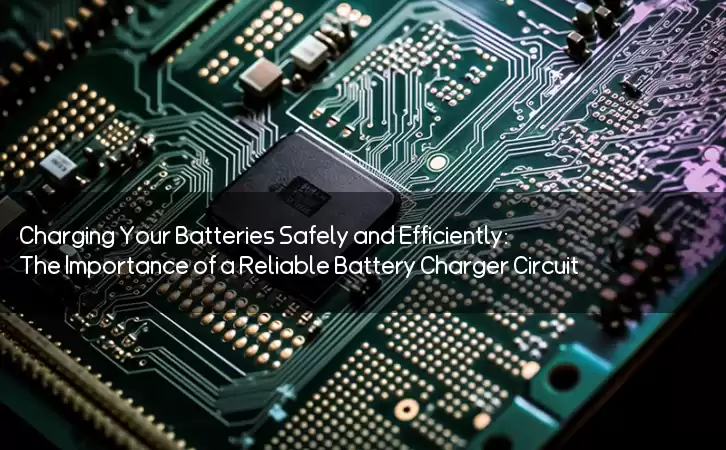Information Center
Charging Your Batteries Safely and Efficiently: The Importance of a Reliable Battery Charger Circuit
Published:2023-07-29 20:33:21 Author:Green WCND Views:87A battery charger circuit is an essential component in electronic devices that rely on rechargeable batteries. With the increasing dependence of devices on battery power, finding a reliable and efficient way of charging batteries has become very important. This is where the battery charger circuit comes in.

The battery charger circuit is designed to charge rechargeable batteries. The circuit works by converting AC power into DC power, which charges the battery. The circuit also regulates the charging process to ensure that the battery is charged to its maximum capacity without overcharging.

The battery charger circuit comes in different types depending on the type of battery it is meant to charge. Some of the common battery types include Lithium-Ion, Nickel-Cadmium, and Lead-Acid batteries. The charging process for each of these batteries is different, and the charger circuit must be designed accordingly.

In a Lithium-ion battery charger circuit, the charger must regulate the charging process to avoid overcharging. Lithium-ion batteries are sensitive to overcharging, which can cause the battery to overheat and even explode. The charger circuit must monitor the battery voltage and regulate the charging to avoid overcharging.
On the other hand, Nickel-Cadmium batteries require a constant current charger circuit. These batteries have a characteristic charge curve, where the charging current must be kept constant until the battery voltage reaches a specific level. Once the battery voltage reaches the set level, the charger circuit must switch to constant voltage mode to prevent overcharging.
The Lead-Acid battery charger circuit is the simplest of all charger circuits. The charger circuit must monitor the battery voltage and regulate the charging current to avoid overcharging. The charger must also be designed to handle high current levels since Lead-Acid batteries have a high charging current.
When designing a battery charger circuit, it is essential to consider several factors to ensure its efficiency and safety. Some of the factors to consider include the charging current, maximum charging voltage, charging time, and safety features.
The charging current is the amount of current flowing into the battery during the charging process. The charging current should not be too high or too low. A high charging current can damage the battery, while a low charging current can prolong the charging time.
The maximum charging voltage is the voltage at which the charging process should stop. The charger circuit must be designed to monitor the battery voltage and switch off the charging process once the battery reaches the maximum voltage.
The charging time is the amount of time it takes to charge the battery fully. The charger circuit must be designed to charge the battery within the specified time without overcharging or undercharging it.
Finally, safety features are essential in a battery charger circuit. These include overcharge protection, short-circuit protection, and temperature monitoring to prevent overloading or overheating of the battery.
In conclusion, the battery charger circuit is an essential component in electronic devices that rely on rechargeable batteries. The circuit is designed to convert AC power into DC power to charge the battery. When designing a battery charger circuit, several factors must be considered, including the charging current, maximum charging voltage, charging time, and safety features. With the right design, the battery charger circuit can help extend the lifespan of rechargeable batteries and ensure that devices keep working efficiently and reliably.
Power Adapter Design and Customization Guide for Portable Electric KettlesI. Common Design Types for Portable Electric Kettle Power AdaptersPortable electric ke···
I. Common Design Types of Power Adapters External Independent Type (Most Common) Design: A standalone adapter (e.g., "black brick") connected to the p···
Handheld Vacuum Cleaner Power Adapter Selection GuideIntroductionHandheld vacuum cleaners have become a mainstream tool for household cleaning due to their port···
Drill Power Adapter Selection Guide.drill-container { font-family: Arial, sans-serif; line-height: 1.6; max-width: 800px; margin: 0 auto; padding: 20px; } .dril···





